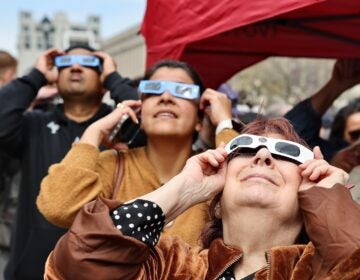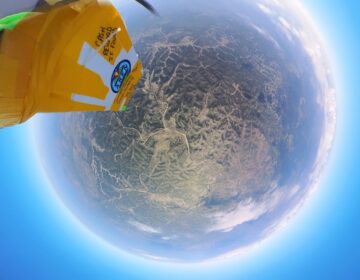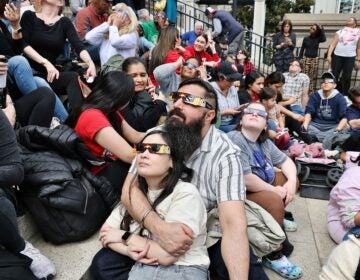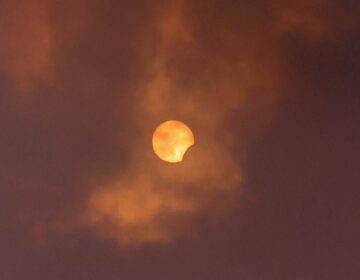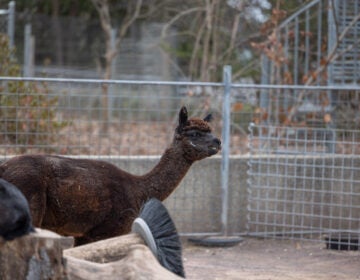Philly-area researchers return from eclipse ballooning trips feeling excited, relieved — and disappointed
Teams from Drexel and the University of Delaware traveled to the path of totality as part of a nationwide NASA project.
Listen 1:14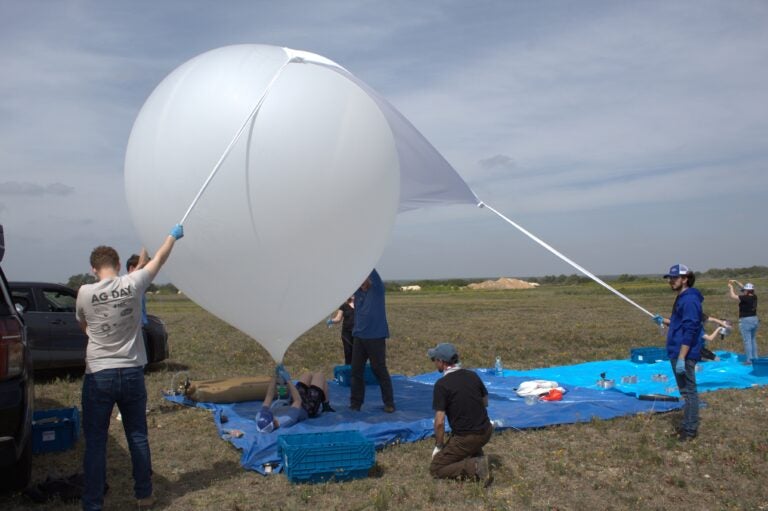
The University of Delaware research team used a sheet to protect their balloon from the strong winds while they filled it with helium. Credit: Beatrix Nowak. (Beatrix Nowak)
From Philly and the Pa. suburbs to South Jersey and Delaware, what would you like WHYY News to cover? Let us know!
Some local researchers from Drexel University and the University of Delaware are back from the path of totality with a partial win after traveling to upstate New York and Texas to conduct research during the solar eclipse on Monday.
The two teams are part of a nationwide eclipse ballooning project from NASA, which sent weather balloons with sensors tens of thousands of meters into the atmosphere. The project included more than 50 teams with hundreds of participants across the country. The goal was to have the balloons in place high in the atmosphere during the precious few minutes of a total solar eclipse, so they could do some research under those unique conditions. The next total solar eclipse over the U.S. will be in 2044.
The teams started preparing their equipment and procedures many months ago, including launches during an annular eclipse in Texas last October. The practice runs paid off: They successfully launched their balloons during the total solar eclipse and are now working to get the balloons and sensors back.
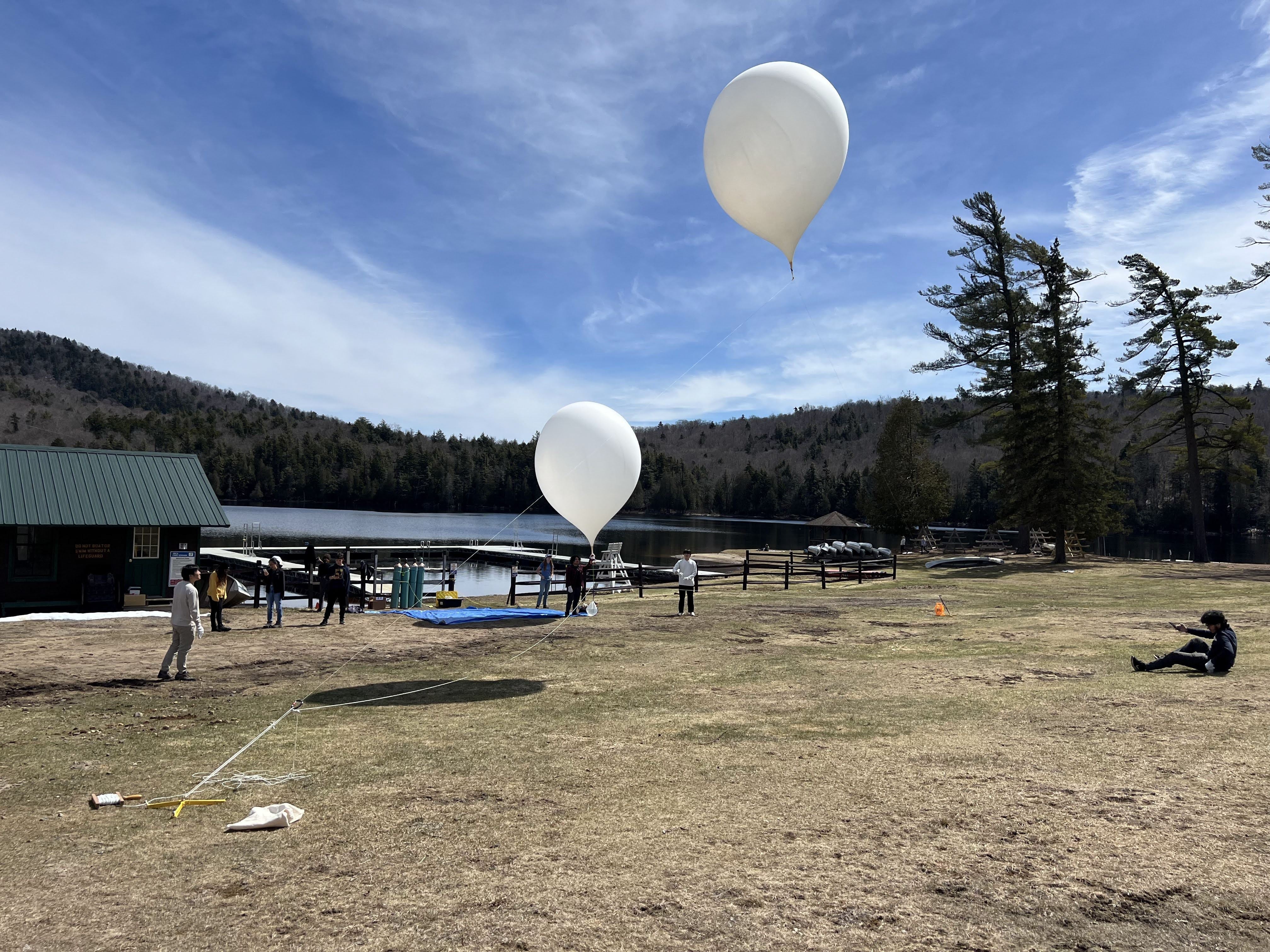
The group from Drexel University and Springside Chestnut Hill Academy went to Old Forge, New York, in the northern part of the state. On Monday morning, they had some concerns that the strong winds would blow their balloons off the path of totality but managed to launch their first balloon to the altitude they were aiming for.
Kiana Ahmari, a chemical engineering student at Drexel, said it was an amazing experience.
“Honestly, I feel relieved,” she said. “This has been in the works since January last year. I’m just excited to look at what data we ended up getting out of this.”
Their balloon carried instruments to study gravity waves in the atmosphere, which affect the weather but have been hard for forecasters to pin down in the past, and ozone, the chemical in the atmosphere that protects us from ultraviolet radiation.
They had a second balloon ready, but a line broke, so their payload from the second balloon came down.
“The failures are a real learning opportunity too and it really is okay because we have … so much equipment that was successful,” said Richard Cairncross, a professor of chemical engineering at Drexel who led the team.
He said he was proud of how everyone worked together to train, plan and make quick decisions during the day of the eclipse, such as deciding when to open and close a vent in the balloon that would control how quickly or slowly it would rise based on the altitude data they were getting on the ground.
“There is a little bit of, maybe, frustration that you have this uncertainty if you’re doing it right, but then you stick with the process and it works out,” he said.
Their balloon ended up four hours away in Vermont, and they drove there on Tuesday morning to try to find it.
The team from the University of Delaware faced strong winds and cloudy skies in Junction, Texas, where they had also launched their balloon during the annular eclipse last October. Their balloon had sensors to study gravity waves and muons, tiny particles that come from cosmic rays and are part of the building blocks of the universe. They built the sensors to detect muons themselves.
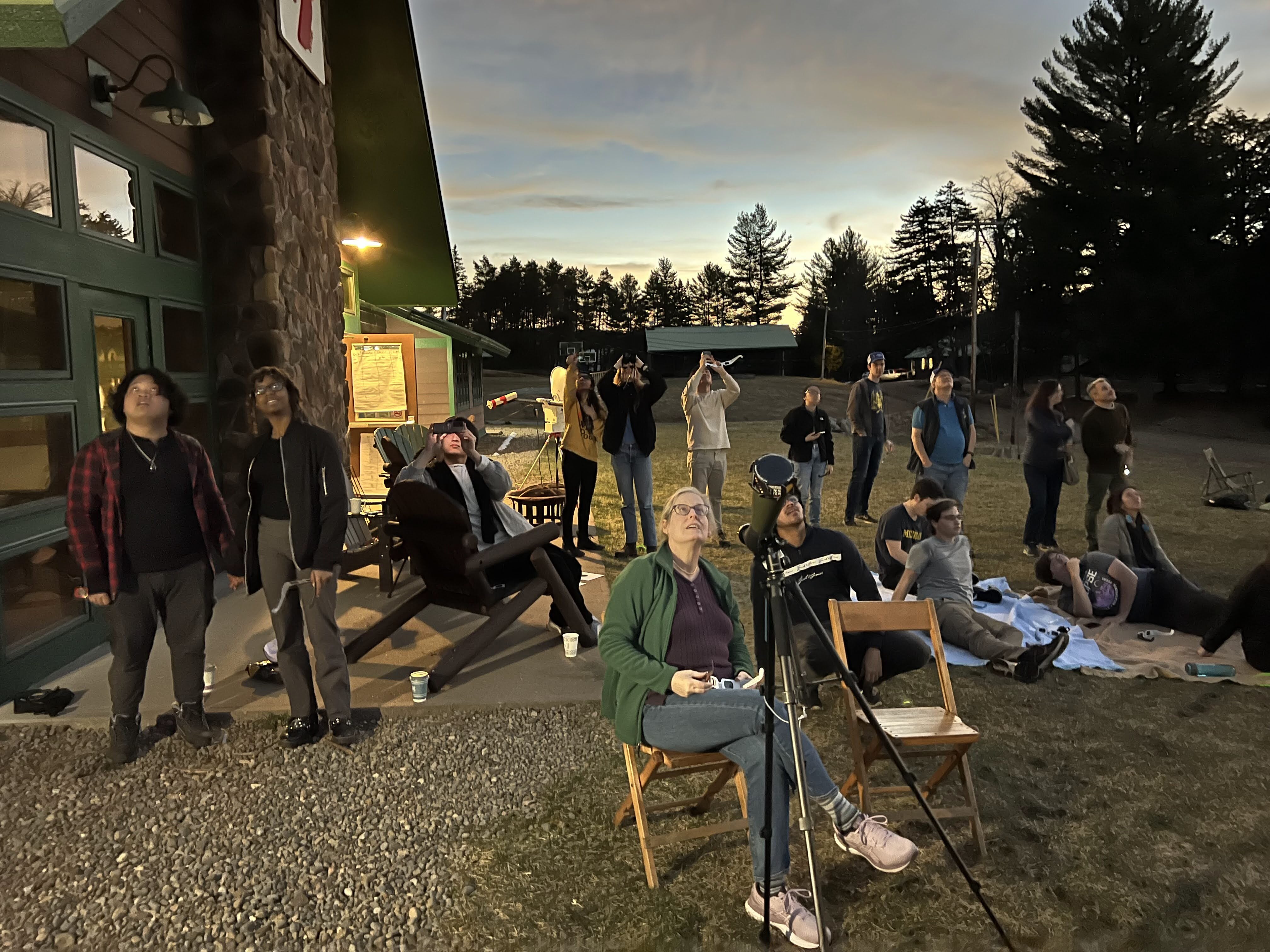
While they prepared to launch their balloons, they saw the balloons from other teams rip and fly out of control. They launched their balloon successfully despite the wind, but it rose a little too quickly, they lost contact with it and the balloon probably burst in the atmosphere a few minutes before the total eclipse started.
“That’s a bit of a disappointment,” said team leader Edmund Nowak, a physics professor at the University of Delaware. But he added that they were happy to have at least sent their balloon up successfully.
“Nothing exceeds the level of excitement and feeling of success and reward to have gotten that balloon up there in the air without anything going wrong.”
Jarrod Bieber, who is studying physics and astrophysics, said it was still a good experience because all of their equipment mostly worked: the balloon, the trackers and their live-streaming system. He said his biggest disappointment is that they did not get a good view of the total eclipse because of the heavy cloud cover.
“That was one of the things I was looking forward to but it is what it is; can’t control the weather.”
Now they are following the three trackers on the balloon to try and find it so they can collect their scientific data and camera footage.

Saturdays just got more interesting.
WHYY is your source for fact-based, in-depth journalism and information. As a nonprofit organization, we rely on financial support from readers like you. Please give today.



